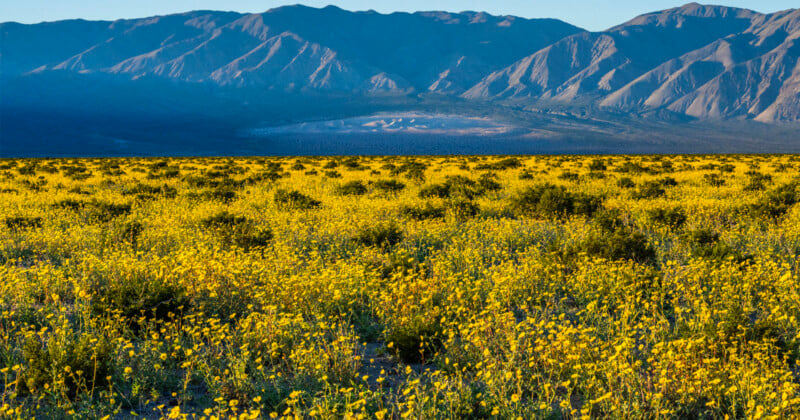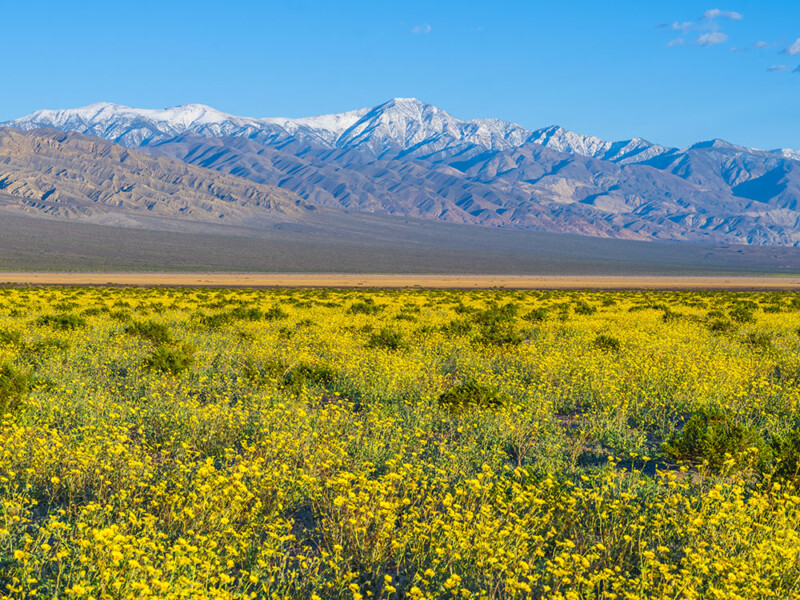Photos Show Wildflower Superbloom Covering Death Valley in California

A photographer has captured spectacular photos of a rare wildflower superbloom covering the hottest and driest place on Earth: Death Valley in California.
Elliot McGucken tells PetaPixel that he was “amazed” at how many yellow flowers (Desert Gold) were gracing the fields of Death Valley National Park when he visited on March 19.
![]()
![]()
![]()
“When I entered into the park the flowers grew even more dense, and I spent the day enjoying their magnificent fragrance while delighting in all sorts of photographic compositions in every direction,” says McGucken.
“From the desert dunes to the sandy, rocky terrain, the photographs capture the essence of Death Valley while paying homage to the most ephemeral and rare player in the scene — the Desert Gold Wildflowers.”

![]()
![]()
The photographer says that a superbloom such as the one now is a “once-in-a-decade event” with the last one coming in 2016.
“And Death Valley is the hottest and driest place on earth,” adds McGucken. “The flowers can wither and disappear in just a couple of sunny and windy days as the temperatures climb.”
McGucken says that the wildflower superbloom is down to the increased rain Death Valley received in 2023 and 2024. EarthSky reports that Death Valley typically gets about two inches of rain per year. But in the past six months, there has been double that amount with the remnants of Hurricane Hilary delivering 2.2 inches of water in August 2023 and an atmospheric river hailed another 1.5 inches in February 2024.
![]()
![]()
![]()
A Rare Event
At the beginning of March, PetaPixel reported on the impending superbloom in California. It’s the second year in a row that there has been a colorful bloom on the West Coast.
Death Valley National Park put out a press release saying that dense concentrations of bright wildflowers have blanketed parts of the park such as Panamint Valley. However, it said that the superbloom wasn’t expected throughout all of Death Valley.
![]()
The park service also reminded visitors to stay on designated paths and trails while urging tourists not to pick any flowers as removing them means fewer seeds and fewer future blooms to enjoy next year.
More of McGucken’s work be found on his website, Instagram, and Facebook.
Image credits: Photographs by Ellion McGucken.